Nissan Leaf VS Suzuki Swace – Specs, Efficiency & Price Comparison
Which model is the better choice – the Nissan Leaf or the Suzuki Swace? We compare performance (217 HP vs 140 HP), boot capacity (394 L vs 596 L), efficiency (16.70 kWh vs 4.50 L), and of course, the price (30800 £ vs 31900 £).
Find out now which car fits your needs better!
The Nissan Leaf (Hatchback) is powered by a Electric engine and comes with a Automatic transmission. In comparison, the Suzuki Swace (Estate) features a Full Hybrid engine and a Automatic gearbox.
When it comes to boot capacity, the Nissan Leaf offers 394 L, while the Suzuki Swace provides 596 L – depending on what matters most to you. If you’re looking for more power, you’ll need to decide whether the 217 HP of the Nissan Leaf or the 140 HP of the Suzuki Swace suits your needs better.
There are also differences in efficiency: 16.70 kWh vs 4.50 L. In terms of price, the Nissan Leaf starts at 30800 £, while the Suzuki Swace is available from 31900 £.
Compare all the key specs now and find out which model fits your lifestyle best!
Nissan Leaf
The Nissan Leaf stands out as a pioneering model in the realm of electric vehicles, known for its impressive blend of practicality and eco-friendliness. It offers a smooth and quiet driving experience, making it an ideal choice for city commuting and longer journeys alike. The interior design is both comfortable and intuitive, providing drivers with a sense of modernity and ease of use.
details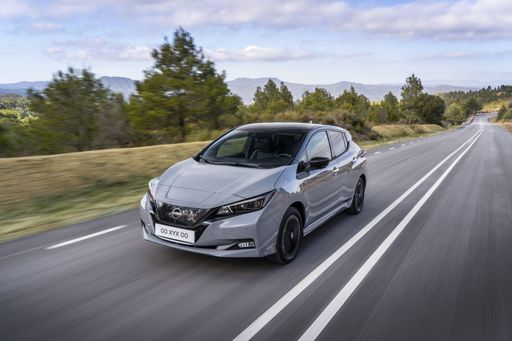 @ germany.nissannews.com
@ germany.nissannews.com
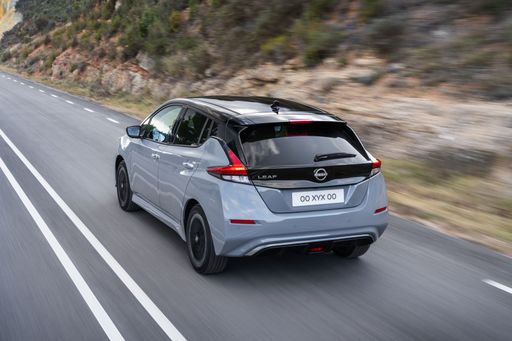 @ germany.nissannews.com
@ germany.nissannews.com
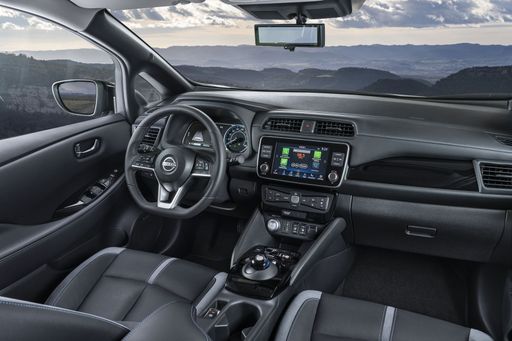 @ germany.nissannews.com
@ germany.nissannews.com
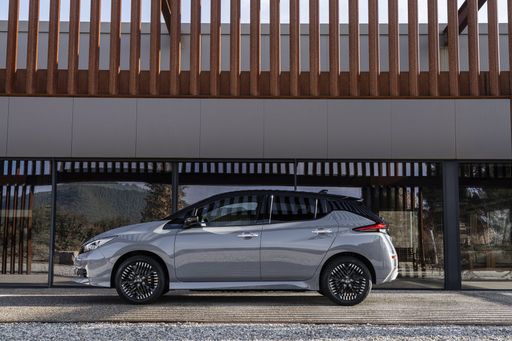 @ germany.nissannews.com
@ germany.nissannews.com
Suzuki Swace
The Suzuki Swace presents itself as a stylish hybrid estate car, combining practicality with eco-friendly credentials. Its sleek design is complemented by a comfortable and spacious interior, ideal for families and long journeys. The Swace's impressive fuel efficiency and advanced safety features make it a standout choice for those looking to merge economy with everyday usability.
details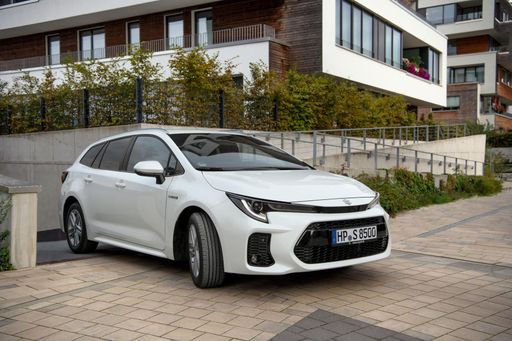 @ Suzuki
@ Suzuki
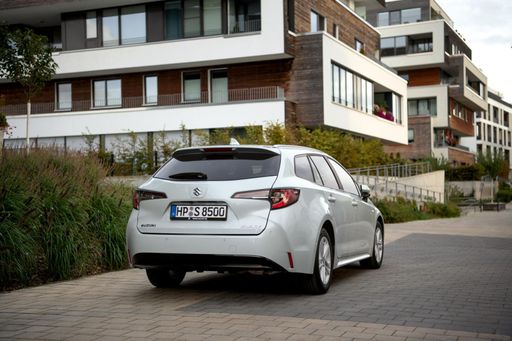 @ Suzuki
@ Suzuki
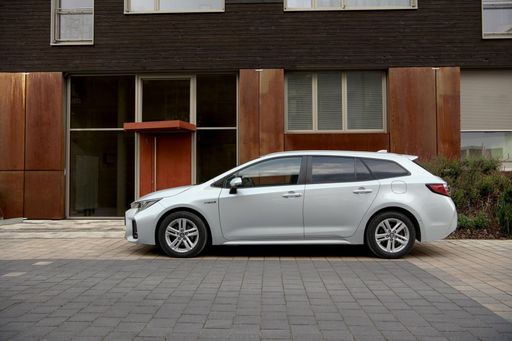 @ Suzuki
@ Suzuki
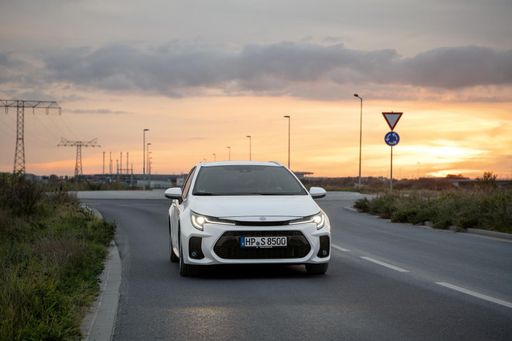 @ Suzuki
@ Suzuki
 @ Suzuki
@ Suzuki

|

|
|
|
|
Costs and Consumption |
|
|---|---|
|
Price
30800 - 37200 £
|
Price
31900 £
|
|
Consumption L/100km
-
|
Consumption L/100km
4.50 L
|
|
Consumption kWh/100km
16.7 - 17.8 kWh
|
Consumption kWh/100km
-
|
|
Electric Range
270 - 385 km
|
Electric Range
-
|
|
Battery Capacity
39 - 59 kWh
|
Battery Capacity
-
|
|
co2
0 g/km
|
co2
102 g/km
|
|
Fuel tank capacity
-
|
Fuel tank capacity
43 L
|
Dimensions and Body |
|
|---|---|
|
Body Type
Hatchback
|
Body Type
Estate
|
|
Seats
5
|
Seats
5
|
|
Doors
5
|
Doors
5
|
|
Curb weight
1580 - 1756 kg
|
Curb weight
1475 kg
|
|
Trunk capacity
385 - 394 L
|
Trunk capacity
596 L
|
|
Length
4490 mm
|
Length
4655 mm
|
|
Width
1788 mm
|
Width
1790 mm
|
|
Height
1540 - 1545 mm
|
Height
1460 mm
|
|
Payload
384 - 415 kg
|
Payload
360 kg
|
Engine and Performance |
|
|---|---|
|
Engine Type
Electric
|
Engine Type
Full Hybrid
|
|
Transmission
Automatic
|
Transmission
Automatic
|
|
Transmission Detail
Reduction Gearbox
|
Transmission Detail
-
|
|
Drive Type
Front-Wheel Drive
|
Drive Type
Front-Wheel Drive
|
|
Power HP
150 - 217 HP
|
Power HP
140 HP
|
|
Acceleration 0-100km/h
6.9 - 7.9 s
|
Acceleration 0-100km/h
9.40 s
|
|
Max Speed
144 - 157 km/h
|
Max Speed
180 km/h
|
|
Torque
320 - 340 Nm
|
Torque
-
|
|
Number of Cylinders
-
|
Number of Cylinders
4
|
|
Power kW
110 - 160 kW
|
Power kW
103 kW
|
|
Engine capacity
-
|
Engine capacity
1798 cm3
|
General |
|
|---|---|
|
Model Year
2019
|
Model Year
2024
|
|
CO2 Efficiency Class
A
|
CO2 Efficiency Class
C
|
|
Brand
Nissan
|
Brand
Suzuki
|
Nissan Leaf
Introduction to the Nissan Leaf: A Pioneer in Electric Mobility
The Nissan Leaf has established itself as a trailblazer in the realm of electric vehicles (EVs) since its launch. As we delve into its present-day iterations, the Leaf continues to soar in popularity due to remarkable advancements in technology and sustainability. Let's explore what makes the Nissan Leaf a standout in today's automotive market.
Power and Performance: Under the Hood of the Nissan Leaf
The Nissan Leaf boasts a power output ranging from 150 to 217 PS, depending on the battery option chosen. The vehicle's electric motor, a product of cutting-edge engineering, offers instant torque ranging from 320 to 340 Nm, resulting in impressive acceleration capabilities. The 0 to 100 km/h dash is achieved in as little as 6.9 seconds, showcasing its prowess in electric performance.
Battery Technology: Efficient Energy Management
When discussing the Nissan Leaf, battery technology is at the forefront. The available battery capacities range from 39 to 59 kWh, supporting an electric range between 270 to 385 km. This flexibility allows drivers to choose a model that best fits their driving habits, providing peace of mind for longer journeys without frequent recharging.
Sustainability: The Environmental Edge
One of the primary attractions of the Nissan Leaf is its commitment to sustainability. As an all-electric vehicle, it produces zero CO2 emissions, placing it in the top tier of the CO2-efficiency class with an 'A' rating. This clean energy approach contributes significantly to reducing environmental impact and supports Nissan's drive towards a greener future.
Design and Comfort: Aesthetic Appeal and Practicality
The Nissan Leaf is not just about efficiency; it's also designed for comfort and utility. With its sleek hatchback body and dimensions of 4490 mm in length, 1788 mm in width, and a height of up to 1545 mm, it offers ample interior space. The boot capacity ranges from 385 to 394 litres, providing sufficient storage for everyday needs. The model accommodates five passengers comfortably, ensuring a pleasant ride for everyone.
Innovations and Safety: Advanced Features for Peace of Mind
Nissan equips the Leaf with an array of intelligent features that enhance safety and convenience. The available equipment lines, including N-CONNECTA, Tekna, e+ N-CONNECTA, and e+ Tekna, offer varying levels of technology integration. ProPILOT Assist, e-Pedal, and a comprehensive suite of driver-assistance technology are just a few examples that highlight Nissan's commitment to innovation in the EV market.
Conclusion: The Nissan Leaf Continues to Lead
With prices ranging from €35,900 to €43,400, the Nissan Leaf remains an attractive choice for those looking to embrace electric mobility. It perfectly balances performance, design, and sustainability, making it a compelling choice in the competitive EV landscape. The Nissan Leaf not only represents the future of driving but also reinforces why it continues to be a leader in the electric vehicle community.
Suzuki Swace
Introducing the Suzuki Swace: A Hybrid Revolution
The Suzuki Swace, a remarkable addition to the hybrid market, promises a blend of efficiency and performance. Designed for those who appreciate sustainability without compromising on comfort, this estate car is set to redefine the hybrid experience.
Powertrain and Efficiency
At the heart of the Suzuki Swace lies a sophisticated full-hybrid system. With a 1.8-litre engine paired with an electric motor, the Swace delivers a combined power output of 140 PS (103 kW). This combination ensures optimal fuel efficiency, with a consumption rate of just 4.5 L/100 km, making it an economical choice for eco-conscious drivers.
Utilising a continuously variable transmission (CVT), the Swace seamlessly transitions between power sources. This system, alongside its front-wheel-drive configuration, guarantees a smooth and responsive driving experience. Drivers can also take comfort in the car's CO2-efficiency rating of Class C, with emissions as low as 102 g/km.
Sleek Design and Practical Features
The Suzuki Swace's design exemplifies understated elegance. Measuring 4,655 mm in length, 1,790 mm in width, and 1,460 mm in height, it boasts a spacious interior while maintaining an agile footprint suitable for urban environments.
With a generous boot capacity of 596 litres, the Swace is perfect for weekend getaways or the daily commute. The estate's ability to comfortably seat five occupants alongside its ample cargo space highlights its versatility.
Innovative Technology
The Swace comes equipped with a range of state-of-the-art technologies designed to enhance driver convenience and safety. Adaptive cruise control, lane tracing assist, and pre-collision systems are part of its standard suite, ensuring a secure journey every time.
The console's infotainment system integrates seamlessly with smartphones, offering connectivity features such as Apple CarPlay and Android Auto, ensuring you stay connected on the move.
Cost of Ownership
With an estimated monthly cost of €981, the Suzuki Swace is an attractive option for those seeking a cost-effective yet feature-rich hybrid vehicle. Its competitive pricing is complemented by economic benefits, such as lower fuel consumption and maintenance costs, solidifying its status as a wise investment.
Conclusion
The Suzuki Swace marks a significant step forward in the hybrid vehicle segment. Its blend of hybrid efficiency, innovative technology, and practical design makes it a perfect choice for modern consumers who value affordability, style, and sustainability.
The prices and data displayed are estimates based on German list prices and may vary by country. This information is not legally binding.
